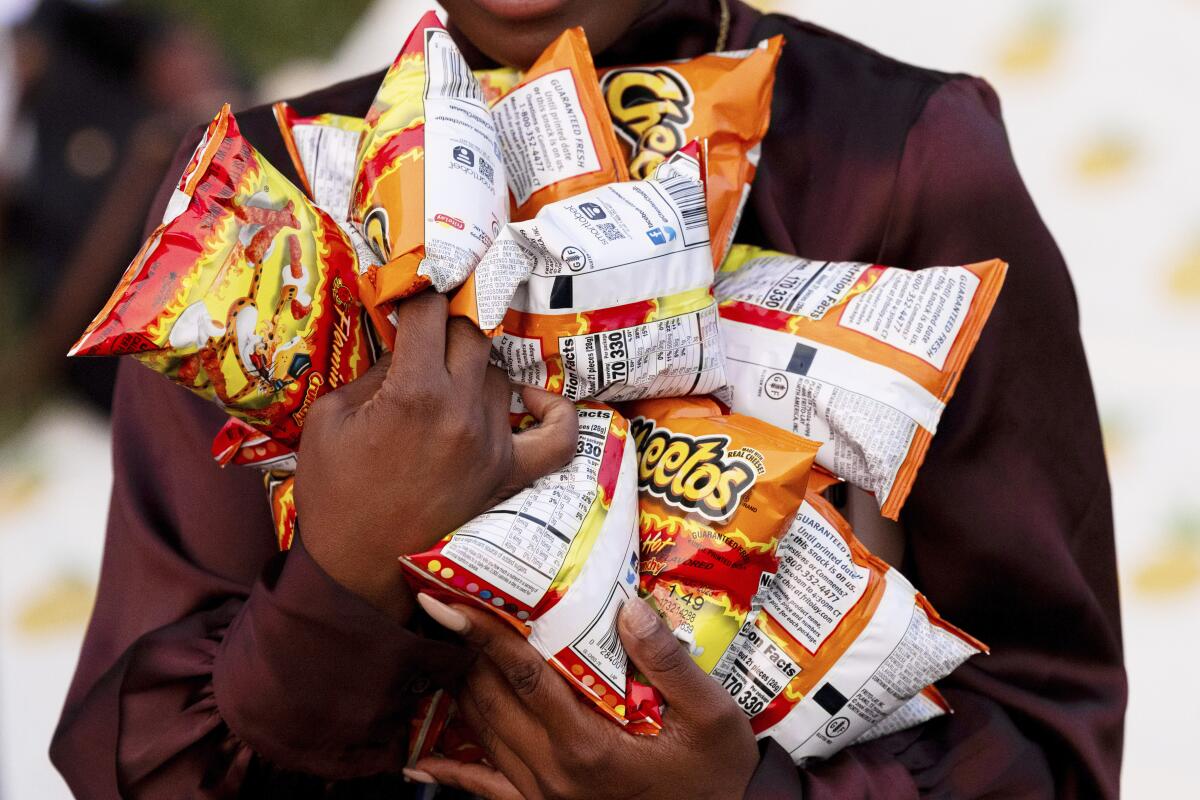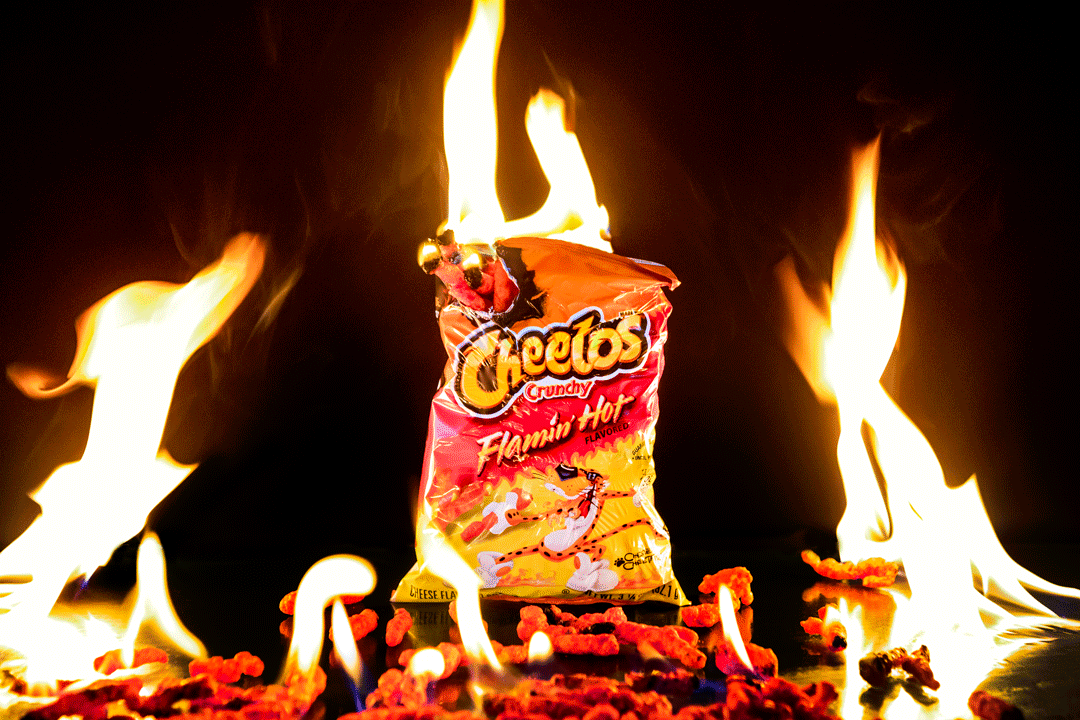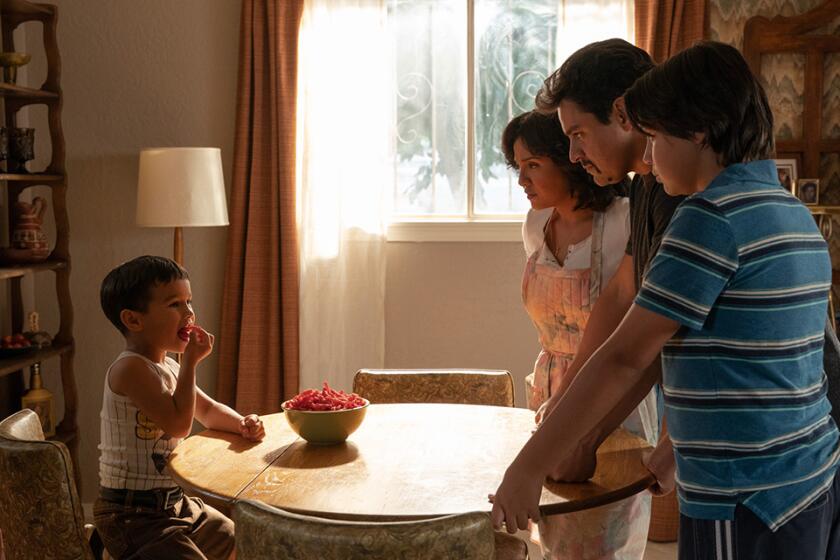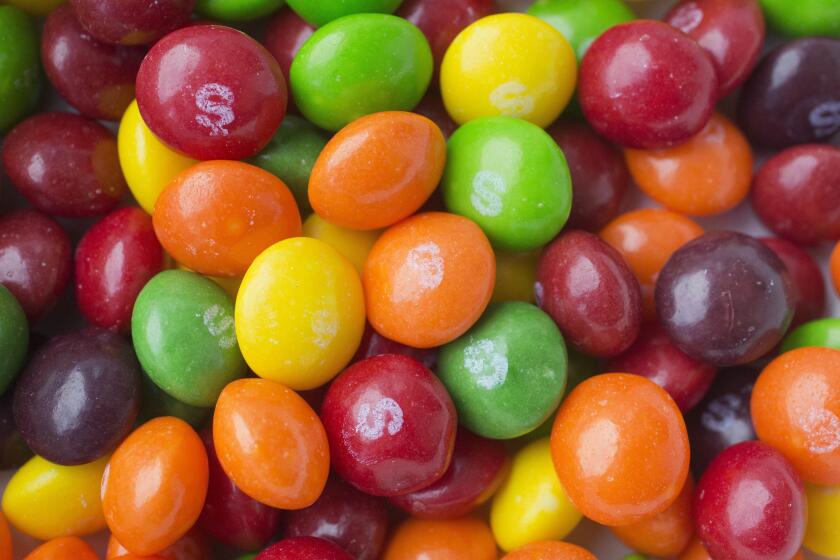California schools could ban Flamin’ Hot Cheetos under new bill

The days of Flamin’ Hot Cheetos in California schools may be numbered.
A new bill aims to ban from public schools food products that contain artificial dyes, including the ingredient that makes Cheetos pop with their signature yellow and red colors.
Lawmakers argue that developing young minds are harmed by the chemical ingredients and that federal guidelines have not been updated in decades.
Assembly Bill 2316 takes aim at six synthetic food dyes — blue 1, blue 2, green 3, red 40, yellow 5 and yellow 6 — as well as coloring agent titanium dioxide, ingredients commonly used to artificially tint foods, including candy, as well as drinks and some medications and vitamins.
Red 40 and yellow 6 are found in Takis, Doritos and Flamin’ Hot Cheetos, the main culprits that turn snack lovers’ fingers a powdery crimson. Blue 1 is found in Froot Loops, and other artificial dyes can be found in Jolly Ranchers, M&Ms, Sour Patch Kids and Mountain Dew.
Assemblymember Jesse Gabriel (D-Encino) introduced the bill and emphasized this is not an outright ban of any specific products, but of those chemical ingredients.
“This is not going to ban for sale in the state of California any of these foods,” Gabriel said Tuesday during a news conference touting the bill. “This is not a food ban. This is not banning Flamin’ Hot Cheetos in California.”
Richard Montañez has for years told a story of how he dreamed up Flamin’ Hot Cheetos while working as a Frito-Lay janitor. The archival record, former employees and Frito-Lay itself say otherwise.
Flamin’ Hot Cheetos’ parent company, Frito-Lay, did not immediately respond to requests for comment.
A 2021 study from the California Environmental Protection Agency found that consuming synthetic food dyes could lead to hyperactivity and other neurological behavior in some children. Gabriel said he was diagnosed with attention deficit hyperactivity disorder as a child, and his own son has the same neurodevelopmental disorder.
Flamin’ Hot Cheetos is not only ubiquitous among many snackers, but it’s also a cultural phenomenon that has inspired art, rap videos, fashion and menu items at restaurants.
The snack’s spicy kick and neon-red dust is as popular as it is controversial, with some schools already banning the product.
Jazmín Urrea has used the crispy, dark red snack as a medium in her art. One of her pieces, called “Pasarela de Chucherias” — which translates to “a junk food path” — consists of a thick circle of Flamin’ Hot Cheetos laid flat on the floor.
The 33-year-old, who lives in South Los Angeles, applauded the proposed legislation, saying the community she grew up in and others like it are food deserts, dotted with convenience stores that sell snacks, instead of grocery stores or farmers markets, meaning there is little access to fresh foods.
“The school should be an oasis,” she said Tuesday. ”It’s not like I want to completely ban people from having their snacks. But at least at schools, it can be more of a food oasis. Ultimately, it will make our selection of food safer.”
The Los Angeles Unified School District serves roughly 530,000 meals daily. An LAUSD spokesperson said the district is already in compliance with the bill’s proposed legislation because the district’s “current nutrition policy and practice does not allow for products with artificial colors, flavors and preservatives.”
Edgar Zazueta, a spokesperson for the Assn. of California School Administrators, said there aren’t many schools that sell the snacks targeted in the ban.
“The biggest impact would be to student stores that often are selling items for their [Associated Student Body] for student funds,” Zazueta said.
It’s just like its namesake: snackable, though nowhere near as good as fans attest and far more problematic than they’ll ever admit.
Gabriel’s proposed legislation arrives several months after Gov. Gavin Newsom signed into law a statewide ban against “toxic” ingredients found in some sodas and snacks. That bill goes into effect in 2027 and prompted Just Born, which makes the colorful marshmallow Peeps, to remove red dye No. 3 from its recipe.
The Assembly member says his latest bill is a means to protect children in school. Specifics about how the ingredient ban would be rolled out have not yet been revealed.
“The science here is complicated, but the purpose of the bill is not,” Gabriel said. “It is about protecting our students from chemicals that have been proven to harm children and interfere with their ability to learn.”
According to the bill language, elementary schools would be allowed to sell food items that contain the prohibited ingredients during fundraising events either off-campus or at least 30 minutes after the end of the school day.
The California Food Safety Act, the first of its kind in the country, aims to make foods in the state safer, banning additives found in some popular snacks.
The bill aims to encourage manufacturers who want to continue to sell their products in schools to switch their recipes with alternative ingredients or risk school districts across the state using alternative brands that do not have artificial coloring.
“So instead of getting the color from a synthetic food dye, they could get it from beet juice, or turmeric, or pomegranate juice or any of these other natural ingredients out there,” Gabriel said. “We know these companies are capable of making a safer version of their products.”
A proposed California law would ban the sale of foods, including Skittles and other snacks, that contain certain ‘dangerous chemicals.’
Scott Faber with the Environmental Working Group, a nonprofit advocacy group co-sponsoring Gabriel’s bill with Consumer Reports, recommends alternative snacks that don’t have food dyes, such as Rice Krispies, Kellogg’s Eggo Waffles and Cheez-It.
He blamed the federal government for not better regulating food ingredients that could be harmful, to both children and adults.
“The truth is, the FDA is not doing their job,” Faber said during Tuesday’s briefing.
The Food and Drug Administration did not immediately respond to requests for comment.
The National Confectioners Assn., a trade organization that promotes the interests of candy companies in the U.S., said in response to Gabriel’s proposed legislation that the FDA needs to “wake up and get in the game.”
“These activists are dismantling our national food safety system state by state in an emotionally driven campaign that lacks scientific backing,” the group said in a statement. The “FDA is the only institution in America that can stop this sensationalistic agenda, which is not based on facts and science.“
The confectioners group claims that any replacement ingredients would need to be vetted by the FDA and pointed out that there are no alternatives to red dye No. 3 or titanium dioxide that have been approved by the federal government.
None of the dyes proposed in the ingredient ban are part of a natural diet, said Dana Hunnes, a senior dietitian and adjunct assistant professor at the Fielding School of Public Health at UCLA.
Instead, they’re manufactured, Hunnes wrote in an email, and “unnecessary, unhealthy, carcinogenic, likely inflammatory (which itself is a risk factor for cancer and other chronic diseases).”
Urrea, the artist, was introduced to Flamin’ Hot Cheetos before kindergarten, she said. In sixth grade, she said she fell ill after eating too many of the snacks and had to have her stomach pumped. She also had her appendix removed.
The snack has had a profound effect on her life and her art. She rarely eats Cheetos now but thinks they can be enjoyed in moderation. She said she mostly stopped eating Flamin’ Hot Cheetos after researching their ingredients in 2016 in preparation for her art piece. She said she reuses the Cheetos in her artwork.
“And it’s still holding that dye,” she said. “They haven’t disintegrated on me yet. They are in storage but very much vibrant and holding that color. That gives you something to think about.”
Times staff writer Howard Blume contributed to this report.
More to Read
Sign up for Essential California
The most important California stories and recommendations in your inbox every morning.
You may occasionally receive promotional content from the Los Angeles Times.















